Written by Lee. This is a very long post, but this subject is extremely important to Lee. – Trace
We’ve already established that Gothic architecture grabs my eye. Plus, history just fascinates me. I am riveted and transfixed by it. I enjoy being in places where history has taken place and I love the feel of the vibrations of it resonating in me. Since I was a kid, I have been interested in the concept of asylums, partially due to pop culture like The Bell Jar and One Flew Over The Cuckoo’s Nest, and partially due to our utter failure as a society to ever appropriately deal with the most pervasive medical problem in the history of our country. In the United States, almost half of adults, 46.4%, will experience mental illness during their lifetime. In any given year, 5% of those over 18 experience mental illness. That’s nearly 45 million people. In 1988 I personally got a taste of how bad our society is at dealing with this when I spent a few months in a psychiatric facility courtesy of the United States government while the Air Force tried to figure out what to do about my particular inability to conform. It turned out to be less of a problem than they thought it would be once we parted ways, but for a little while I was convinced I might never get to leave.
So when I saw that we would be within a reasonable traveling distance to visit a decommissioned asylum, I really wanted to go.
About 100 miles northeast of Charleston, WV, in the town of Weston, is the former Trans-Allegheny Lunatic Asylum. Originally known as the Weston State Hospital, it was a “Kirkbride” psychiatric hospital that was operated from 1864 until 1994 by the government of West Virginia. A classic state institution of the time.
The “Kirkbride System” of facility design was based on Philadelphia psychiatrist Thomas Kirkbride’s theories regarding the healing of the mentally ill, in which environment and exposure to natural light and air circulation were crucial. The hospitals built according to the Kirkbride Plan would adopt various architectural styles, but had in common the “bat wing” or shallow “V” style floor plan, housing numerous wings that sprawl outward from the center.
The idea was a to maximize the privacy and comfort of the patients. Kirkbride firmly believed that the building design had as much to do with curing patients as other forms of treatment. The design also called for long rambling hallways and very tall ceilings, 12 feet whenever possible. The standard number of wings was eight, with rooms for 250 patients. This was the design used for the Weston Hospital.
Kirkbride’s design also called for facilities to be as self sufficient as possible, and to be on sprawling grounds. The Trans Allegheny was no exception, and boasted it’s own water plant with pump house and filtration facility, wastewater treatment facility, dairy barn, cannery, extensive gardens, livestock pens including hog fattening building, greenhouse and horse barns, using a total of 666 acres.
Designed in Gothic Revival and Tudor Revival styles by Baltimore architect Richard Snowden Andrews, Trans Allegheny was constructed from 1858–1881, but starting accepting patients in 1864. The hospital was designed and built to hold 250 patients, one per patient room. Over time it became more and more crowded. At first they added a person to each room. Then another, then another, until every room had four patients in a room designed for one. Then many of the larger rooms originally designed for recreation were repurposed to dormitories. By the middle of the twentieth century, the state of psychiatry was such that people were being institutionalized at an alarming rate.
Designed to hold 250 patients in comfortable and peaceful solitude, it had 717 patients by 1880; 1,661 in 1938; over 1,800 in 1949; at its peak, 2,600 in the 1950s, sleeping on mattresses in hallways and quadrupled up in the patient rooms, sleeping in shifts.
A 1938 report by a survey committee organized by a group of North American medical organizations, found that the hospital housed “epileptics, alcoholics, drug addicts and non-educable mental defectives” among its population. A series of reports by The Charleston Gazette in 1949 found poor sanitation and insufficient furniture, lighting, and heating in much of the complex.
Trans Allegheny was forcibly closed in 1994 due to changes in patient treatment. The state notified them that they would be closing the facility in 1980 and they began to close down wards over time. Once an area was closed it was essentially locked up and abandoned and left to rot. Finally in 1994 the last patient was removed and the building was padlocked and left to the elements. The hospital was bought at auction for $1.5m by WV businessman Joe Jordan in 2007, and he has spent over a million dollars restoring portions of the building to how it would have looked in the early 1900’s. Below are some photos of the building as it was when it was first seen by Joe Jordan in 2007. I find this a little odd. If I had that kind of money lying around I wouldn’t use it to buy a former insane asylum, but that’s just me – Trace
The hospital’s main building is one of the largest hand-cut stone masonry buildings in the United States, and the second largest hand-cut sandstone building in the world, with the only bigger one being the Moscow Kremlin. It took 23 years to build, and when completed it was 1295 wide, just 25′ shy of a quarter mile. It has 3.5 miles of hallways, and 9 acres of walkable floor space. There are 901 rooms, 250 are for patients, and 980 windows. As someone who loves architecture I was very tempted to go see it, but I also believe that buildings soak up (for lack of a better word) the emotions that are expended in them. This building must be full of agony and pain. – Trace
The main building of the asylum, the “Kirkbride”, holds several rooms that serve as the museum. There are paintings, poems, and drawings made by patients in the art therapy programs, a room dedicated to the different medical treatments and restraints used in the past, and artifacts such as a a straitjacket and hydrotherapy tub. The tour guides dress in clothes that resemble 19th century nurse outfits; blue dress, white apron, white cap, and white shoes. The shorter historical tour allows visitors to see the first floor of the Kirkbride, while the longer historical tour allows visitors to see all four floors, apartments of the staff, the morgue, and the operating room. Aside from the historical tours, there are also two paranormal tours. Both start as the sun sets, the shorter tour lasting around two to three hours, the longer tour being overnight with the option of having a private tour.
The ground floor of the main Kirkbride building is taken up with offices for the company that operates the tours, and a gift shop, and around 20 very well done museum rooms, some of which feature patient artwork.
The tour starts right off in one of the first wards, which has been restored to what it would have been like in 1900 or so.

A typical example of what a patient room would have been like. Every room had a window, and was large enough for one person to sleep in comfortably.

This room was made up to show how larger rooms built for other purposes were eventually turned into patient rooms. Beds were added until they couldn’t fit any more in.

Beautiful walnut staircase s throughout the building. This is the stairs to the second floor of the Kirkbride building.
The upper floors of the main building were used for offices for the Superintendent, the chief physician, psychiatrist, the residence of the Superintendent and the lead nurses quarters. The following pictures are of the offices and the residence of the Superintendent. Pretty stark contrast to the living situation of the patients. – Trace
The following pictures are of the top floor, where the head nurses quarters were.
There was also an amazing ballroom that was used as a shuffleboard court, a theater, and a basketball court.
Moving out of the main building we went to the old medical building, which has been so badly damaged that only a few rooms on the ground floor are available to see.
The medical building includes the morgue and “cooling room” where bodies were kept before burial.

For some reason, haircuts were done at the medical center. Well that must have been terrifying. You wouldn’t know if you were getting a “treatment” of some kind or a haircut. – Trace
There is no shortage of history about how badly this particular area of medicine was handled throughout history. This location is particularly bad, however, as Weston State Hospital found itself to be the home for the West Virginia Lobotomy Project in the early 1950s. This was an effort by the state of West Virginia and Walter Freeman to use lobotomy to reduce the number of patients in asylums because there was severe overcrowding. Freeman’s story is an amazing one all by itself, and worthy of some reading. But the beginning of the end of his career came when he performed a lobotomy on Rosemary Kennedy, at the request of her father Joseph, after which she regressed to the mental state of a two year old. She was immediately placed in an institution where she was not visited by her mother for twenty years, and never saw her father again. Her existence was hidden from the public until after JFK was elected, and then she was described as “retarded”. The failed lobotomy was not public knowledge until 1987.
“Hydrotherapy” was also used extensively, where patients would be submerged in high walled bathtubs full of 55° water. Hundreds and hundreds of people died as a result of this “treatment”.
And of course there’s electroshock therapy.
In 1949 the state built a maximum security ward for the criminally insane. My interior pictures didn’t come out for that location, so here are a few I found online, credit to photographer Walter Arnold.
Alongside the maximum security building was the greenhouse, which is creepy and beautiful.
The tour continued with some more interiors of wards not yet restored, including an isolation area, and fourth floor attics where employees lived.

Apparently it’s pretty common for visitors to have a personal connection to the facility, such a family member who was here, or worked here, or they might have been a patient or worked here themselves. And it’s equally common for them to leave things behind, as one might do at a grave site.

Employees have a strict “hands off” policy for these tokens, and leave them there indefinitely. Eventually, according to our tour guide, a ghost hunter will move them to another location, or some other tourist will take them. Nothing stays forever.
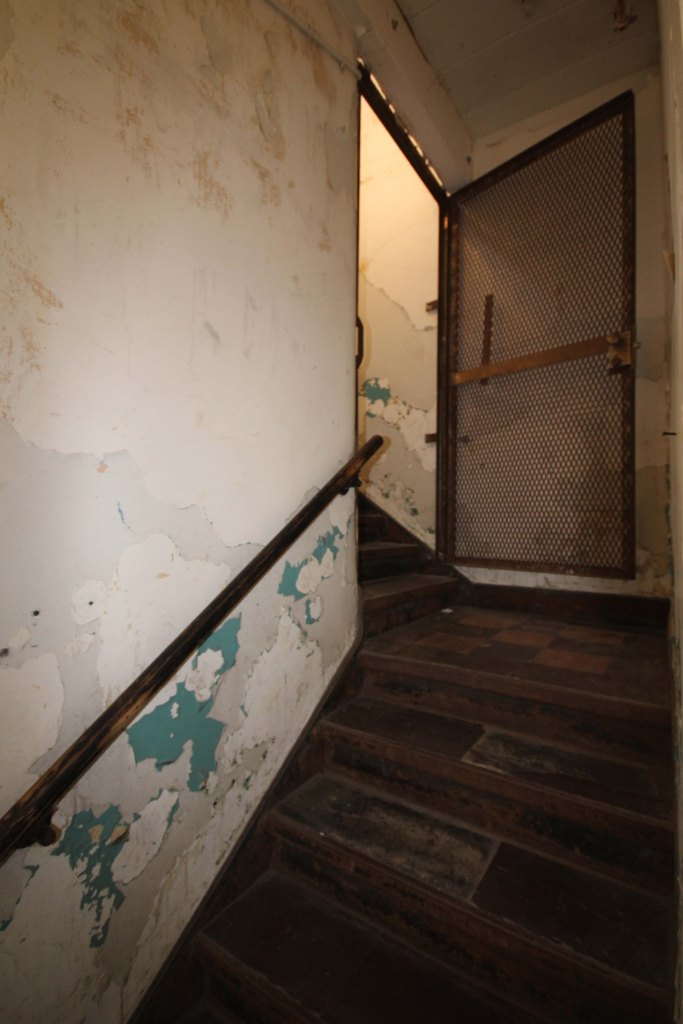
A secure “back stairwell” to allow employees to get around more quickly than following the long hallways from ward to ward.

Patients were encouraged to use art to express themselves, and used pie plates to do so. Only two original paper plates remain hanging over transoms.

In addition to the things left behind by visitors, ghost hunters also leave things behind, but employees always move those items to one room and routinely cull the collection so it doesn’t get out of hand.
I was fascinated by the fourth floor attic area which was basically the same as patient wards, except these rooms were for the employees to live in. It was VERY similar to the servant’s quarters area in the TV show Downton Abbey. I’d love to see some pictures from that era of what these areas looked like when they were lived in.
And finally, the tour concluded with a look at a “VIP” area that overlooked the ballroom.
There’s a piece of “art” that has been circulating around the internet for ages that originated here. It’s a list someone compiled from records of patients, of all the reasons people were admitted to the facility between the years of 1864-1889. Obviously some of the stuff on that list is ridiculous, but LOTS of those things were still used as reasons for commitment to institutions as late as the 1970’s. I took a picture of it, but it’s so long that the type is too small to read, so I typed it up instead because I think it’s important to see. Not because of the silly ones, although certainly at the time they weren’t silly, but because of how many of them could still be pointed to today, with a little rephrasing.
REASONS FOR ADMISSION
WEST VIRGINIA HOSPITAL FOR THE INSANE (WESTON)
OCTOBER 22, 1864 to DECEMBER 12, 1889
Amenorrhea
Asthma
Bad company
Bad habits & political excitement
Bad whiskey
Bite of a rattle snake
Bloody flux
Brain fever
Business nerves
Carbonic acid gas
Carbuncle
Cerebral softening
Cold
Congetion of brain
Constitutional
Crime
Death of sons in the war
Decoyed into the army
Deranged masturbation
Desertion by husband
Diptheria
Disappointed affection
Disappointed love
Disappointment
Dissipation of nerves
Dissolute habits
Dog bite
Domestic affliction
Domestic trouble
Doubt about mother’s ancestors
Dropsy
Effusion on the brain
Egotism
Epileptic fits
Excessive sexual abuse
Excitement as officer
Explosion of shell nearby
Exposure & hereditary
Exposure & quackery
Exposure in army
Fall from horse
False confinement
Feebleness of intellect
Female disease
Fever
Fever & loss of law suit
Fever & nerved
Fighting fire
Fits & desertion of husband
Gastritis
Gathering in the head
Greediness
Grief
Gunshot wound
Hard study
Hereditary predisposition
Ill treatment by husband
Imaginary female trouble
Immoral life
Imprisonment
Indigestion
Intemperance
Interference
Jealousy
Jealousy & religion
Kick of horse
Kicked in the head by a horse
Laziness
Liver and social disease
Loss of arm
Marriage of son
Masturbation & syphillis
Masturbation for 30 years
Medicine to prevent conception
Menstrual deranged
Mental excitement
Milk fever
Moral sanity
Novel reading
Nymphomania
Opium habit
Over action on the mind
Over heat
Over study of religion
Over taxing mental powers.
Parents were cousins
Pecuniary losses: worms
Periodical fits
Political excitement
Politics
Puerperal
Religious enthusiasm
Religious excitement
Remorse
Rumor of husband’s murder or desertion
Salvation army
Scarlatina
Seduction
Seduction & disappointment
Self abuse
Severe labor
Sexual abuse and stimulants
Sexual derangement
Shooting of daughter
Smallpox
Snuff
Snuff eating for two years
Softening of the brain
Spinal irritation
Sunstroke
Superstition
Suppressed masturbation
Suppression of menses
Tobacco & masturbation: hysteria
The war
Time of life
Trouble
Uterine derangement
Venerial excesses
Vicious vices in early life
Women trouble
Young lady & fear
It’s worth saying here that most of us have experienced one or more of these in our lifetimes. Imagine living in a world where a person of power in your life could stick you in an asylum for an indeterminate amount of time for one of these activities. Women in particular we at risk from abusive husbands, because they had the power to commit their wives. While lots of people know that, what few people know is that for a very long time, if a woman was committed by a man, the only way she could leave is if that same man came and got her. If he died, she was there for the rest of her life. In this way lots of unruly daughters were institutionalized for life by prominent fathers. – Trace
At one point towards the end of the two hour tour, I wandered off by myself for a while because the endless stories of misery and suffering were getting to me. I ended up in a small room with a window that had a broken pane so I could get some fresh air. Someone had left a little music box on the window sill, and I took a few minutes to just breathe and listen to the world outside, and the song from the music box. This video sums up the experience. – Trace
According to the VA, 20 Veterans commit suicide EACH DAY.
In the general population, 132 EACH DAY.
STOP THE STIGMA.
800-273-8255
Supporting our Blog
We very much appreciate your support of our blog.





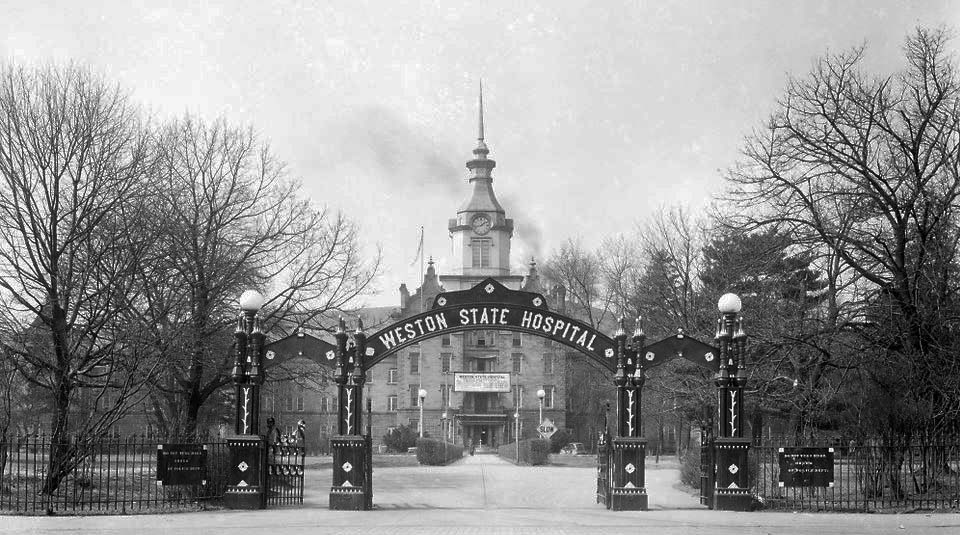




























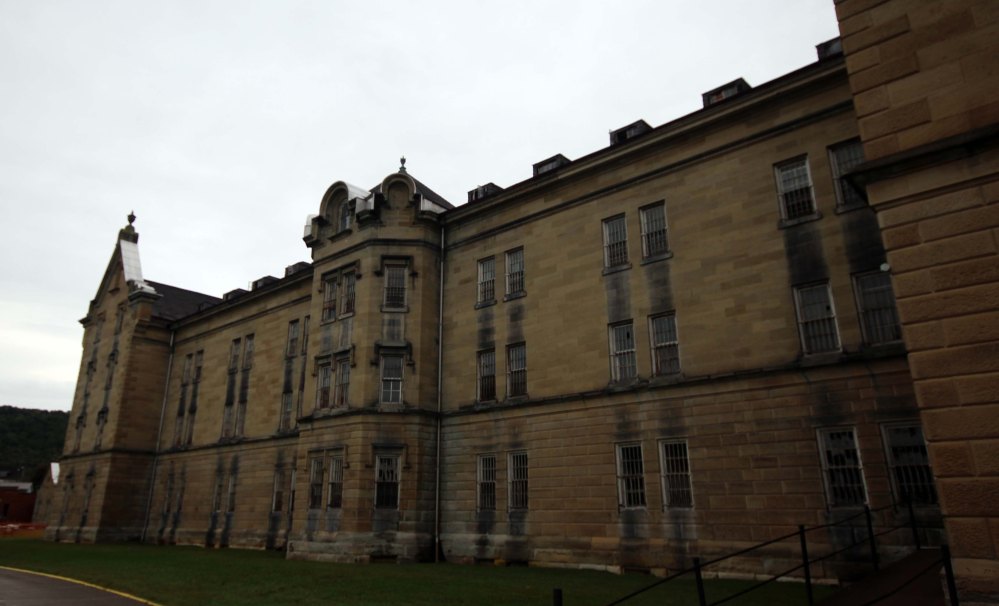













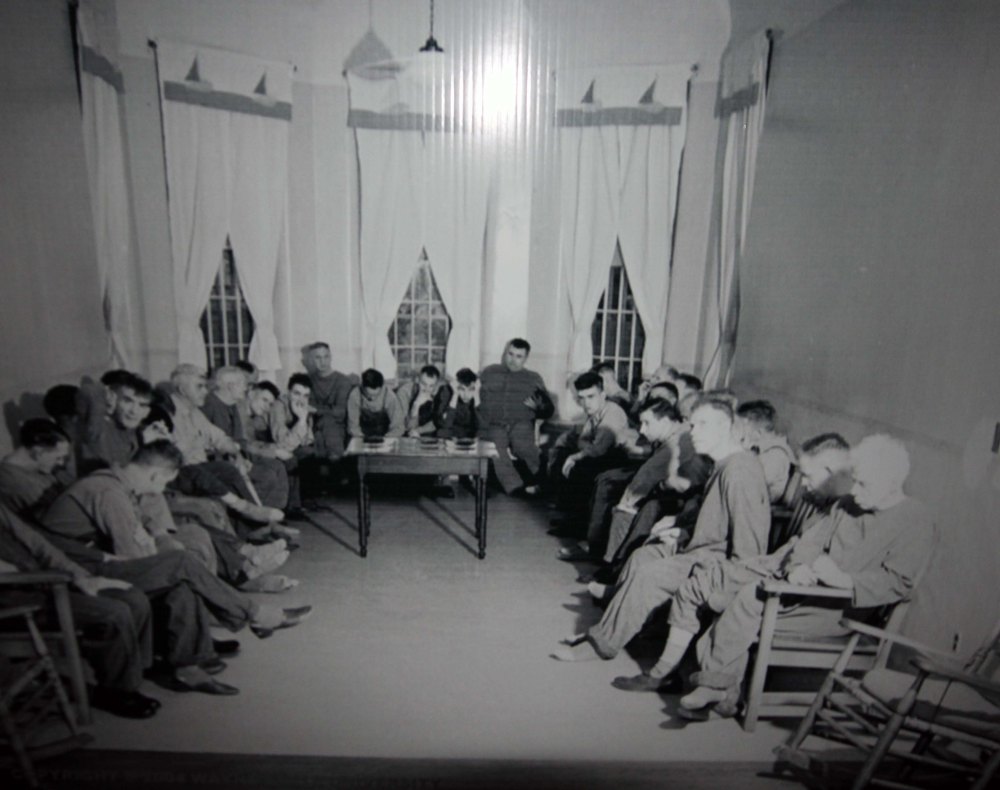












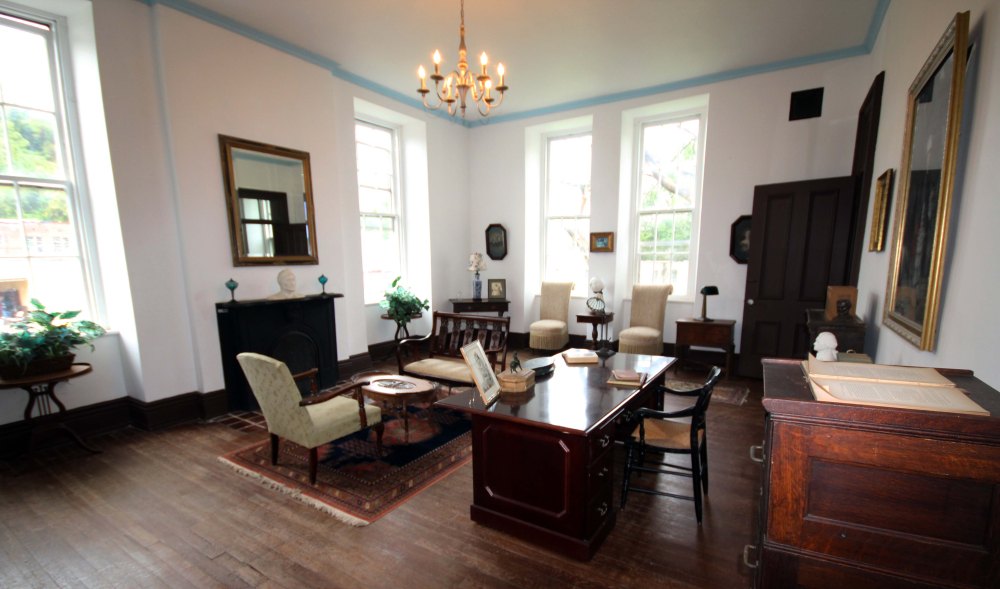


















































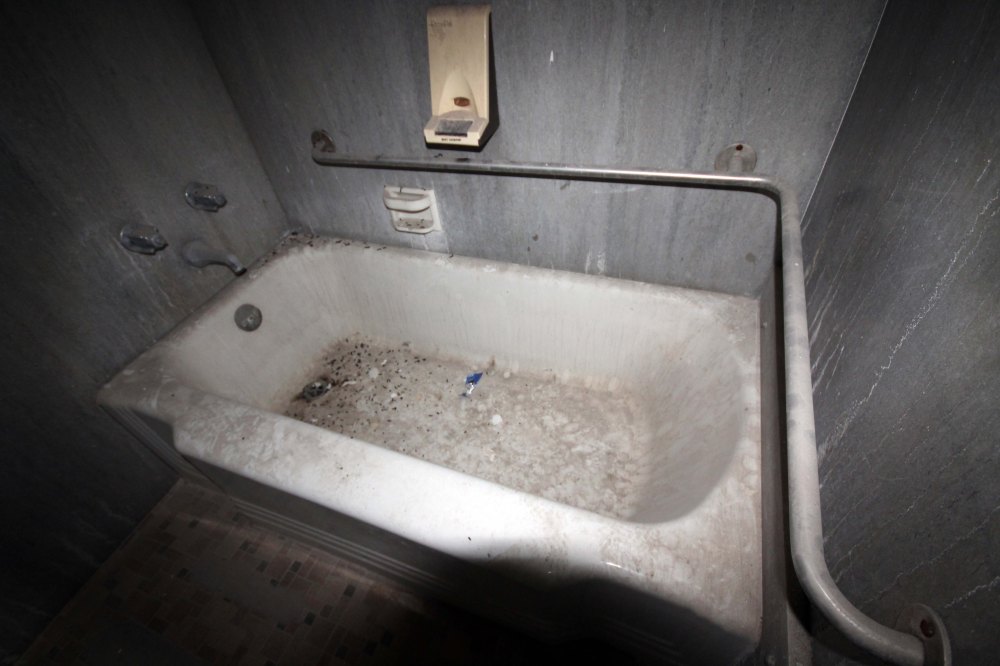























OMG, I love history and am also very intrigued by asylums. Thanks for all the details, and wonderful pictures, makes me feel like I was there. It’s sad to hear that anyone could have been sent there, with just a little evidence. But that ending with the music box was crazy scary, like the ending of all good horror movies. So weird that it was just there on the windowsill…hoooooo!
Wow! That was great reading and a an interesting glimpse into the past. Thanks for the many pictures and written dialog.
Fascinating, but sad 😐
When you were in Minnesota, you could have visited the Fergus Falls Mental Hospital, also fascinating architecture and similar story to the one you visited in West Virginia. https://www.google.com/url?sa=i&url=https%3A%2F%2Fwww.pinterest.com%2Ftalliejo%2Fkirkbride%2F&psig=AOvVaw2mZWD_Suko2yWbBBfsnsOW&ust=1602393336683000&source=images&cd=vfe&ved=0CAIQjRxqFwoTCKCL78WiqewCFQAAAAAdAAAAABAD
Thank for sharing your experience seeing this terrible place. I was actually fine reading it until the end and the list of “diagnosis’s” that could get someone locked up, and then your comment about women and their being put there and how they’d sometimes never get out and WHY. It’s disgusting that this was allowed and makes me angry. Puts the whole women’s movement into a different light doesn’t it? Shows how truly far we’ve (women as a whole) have come and how we NEED to vote and continue to have our voices heard. Just WOW.
Totally agree
Haunting…and not in a fun, scary way. Thank you for sharing.
Pingback: The Trans-Allegheny Lunatic Asylum – Indiatips.in
Pingback: The Trans-Allegheny Lunatic Asylum - Sciencekar
Hello, I am working on a video project about this hospital and would love to use some of your photos. If I credit you, do I have permission?
Those photos were taken by my husband. You may use any of the pictures he took but he would like to know which ones . His email address
His email address is Lee@openroadvideos.com. He is really happy you are doing a video about this he thinks it’s a very Importent subject
Excellent 🙂 I will email the link once done and credit your work. Your husband takes wonderful photos!
If you would like the original pictures let us know and we can email them. The ones on the blog have been shrunk in size
Pingback: The Trans-Allegheny Lunatic Asylum - WiKi-Know